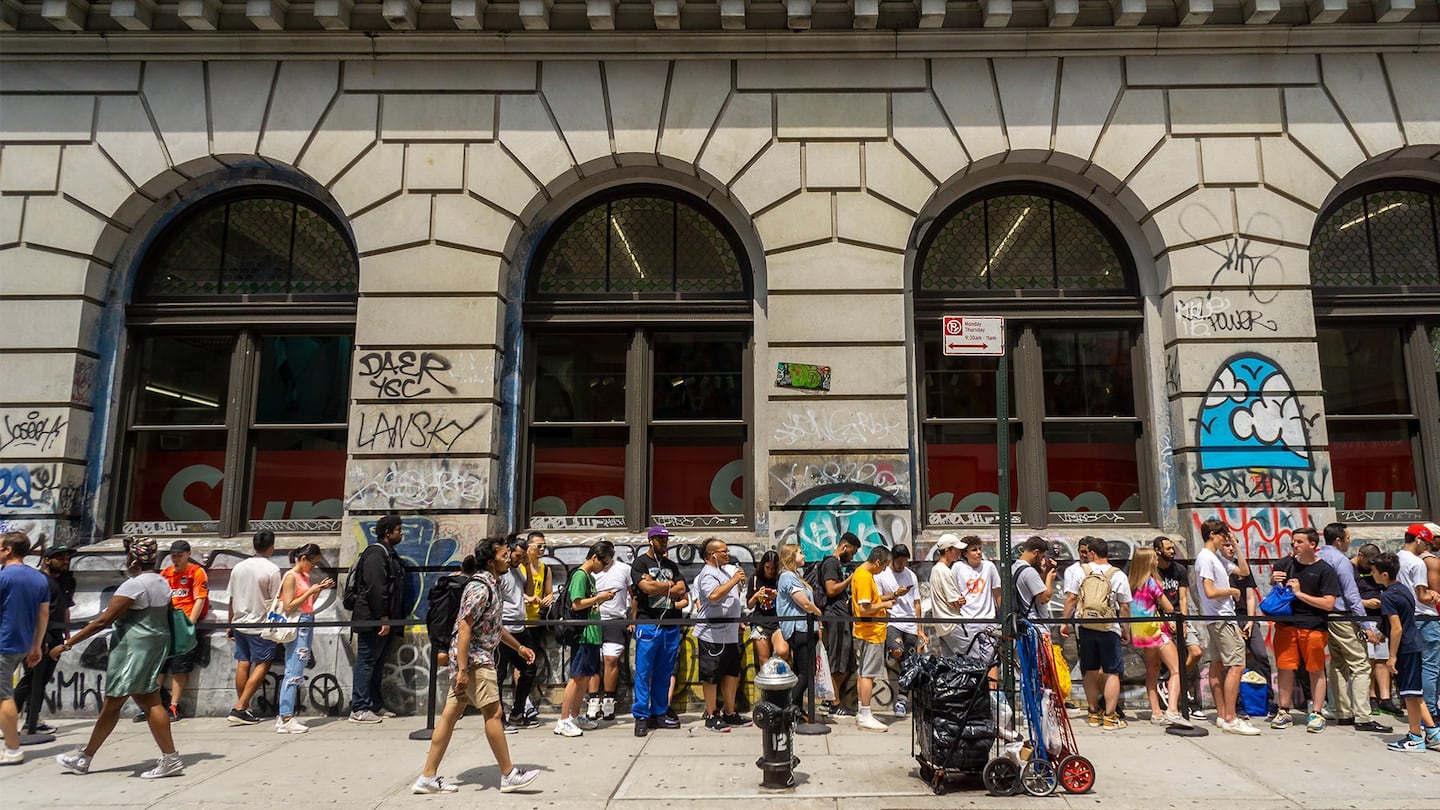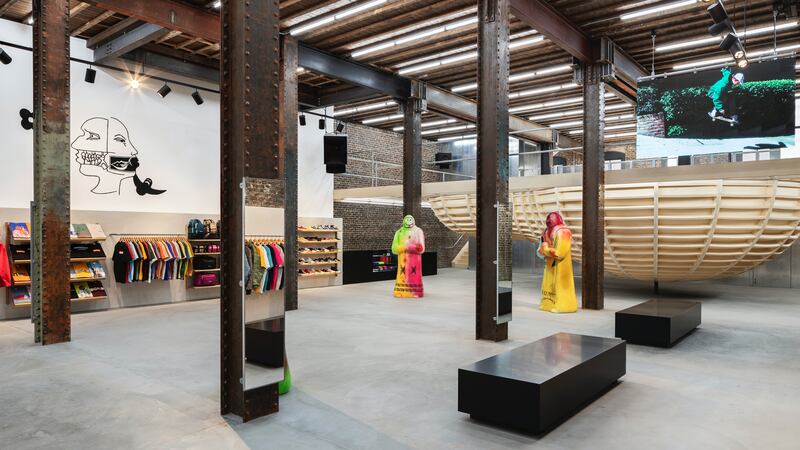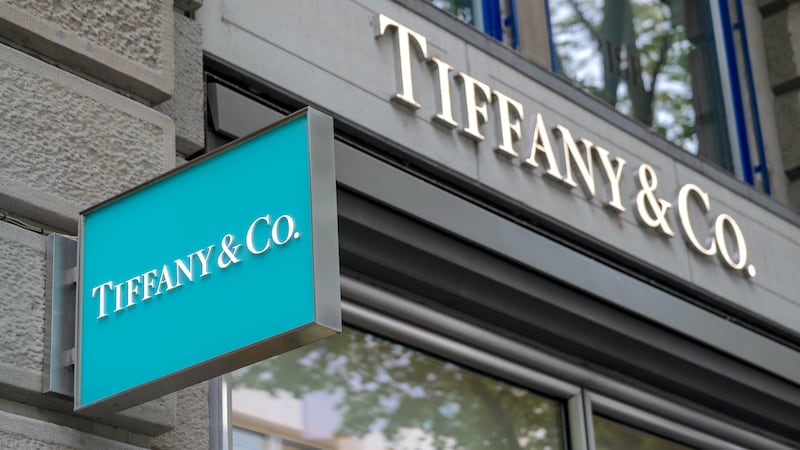
The Business of Fashion
Agenda-setting intelligence, analysis and advice for the global fashion community.

Agenda-setting intelligence, analysis and advice for the global fashion community.

THE CHEAT SHEET
VF Corp. Reigns Supreme

VF Corp. has historically flown under the radar. The company reported over $10 billion in revenue in its last fiscal year, and its brands frequently release high-profile collaborations, with The North Face X Gucci being the latest. Yet the company itself is practically unknown to consumers. It’s getting harder to hide now that VF owns perhaps the buzziest brand of them all in Supreme.
Supreme’s large and loyal fan base will be watching closely for signs that VF is meddling with its new purchase. They can probably let their guard down a bit; the company has plenty of experience providing resources for brands like Vans and North Face to grow without leaving too many fingerprints.
ADVERTISEMENT
VF has been making waves in other areas as well. It’s one of the biggest fashion companies yet to move its regional headquarters from Hong Kong to Shanghai, reflecting the shift in economic gravity toward mainland China. It’s also expanding its traceability disclosures, and by the end of the year will allow anyone to map out how and where 100 products are made, down to their raw materials.
The Bottom Line: Between its aggressive sustainability push and its Supreme acquisition, VF Corp. may be the company to watch in 2021.
Will LVMH Talk Tiffany?

LVMH now owns Tiffany, and earlier this month tapped two insiders, Anthony Ledru and Alexandre Arnault, to run it. Now, perhaps we will learn what the luxury conglomerate plans to do with the American jewellery brand. Tiffany’s final results as an independent company indicated strong sales online and in China, both foundations LVMH is likely to build upon.
Elsewhere in LVMH’s results, look for the company to give its outlook for 2021, potentially including details as to how the company is remaking Sephora and its duty-free empire for a post-pandemic world where beauty and travel have been radically changed. Celine is also due for a progress report, more than two years into the Hedi Slimane experiment. Though the designer may have found his footing creatively, it’s not clear if LVMH is any closer to turning the label into a €2 billion to €3 billion-a-year business.
The Bottom Line: The predominant narrative in luxury fashion during the pandemic was that the big got bigger. With an end in sight, LVMH may begin to use its even-greater clout.
Couture’s New Lineup

Early in the pandemic, the relevance of couture — often a question even in normal times — seemed dubious. By now, many major luxury brands have seen sales fully recover, or are at least well on their way back to pre-2020 levels. For brands that can afford it, couture retains a unique role in their marketing. After all, it’s hard to imagine a bigger publicity boost than Schiaparelli received from Lady Gaga’s appearance in Washington last week.
ADVERTISEMENT
There are only so many presidential inaugurations, of course. Still, new designers continue to be drawn to couture week. This week will see Kim Jones’ first couture show, while Alber Elbaz’s “fashion film” showing off his new, Richemont-backed AZ Factory marks the designer’s return to the industry after leaving Lanvin in 2015. Later in the year, expect Demna Gvasalia’s first Balenciaga couture, and Matthew Williams’ debut in the category with Givenchy.
The Bottom Line: The shows will be audience-free or entirely virtual this week, and several designers have dropped off the schedule entirely due to the pandemic. Even so, it’s possible, even likely, that galas and parties will be back in force by the time the gowns on display this week are intended to be worn.
SUNDAY READING
Professional Exclusives You May Have Missed:
The Week Ahead wants to hear from you! Send tips, suggestions, complaints and compliments to brian.baskin@businessoffashion.com.
Was this BoF Professional email forwarded to you? Join BoF Professional to get access to the exclusive insight and analysis that keeps you ahead of the competition. Subscribe to BoF Professional here.
Antitrust enforcers said Tapestry’s acquisition of Capri would raise prices on handbags and accessories in the affordable luxury sector, harming consumers.
As a push to maximise sales of its popular Samba model starts to weigh on its desirability, the German sportswear giant is betting on other retro sneaker styles to tap surging demand for the 1980s ‘Terrace’ look. But fashion cycles come and go, cautions Andrea Felsted.
The rental platform saw its stock soar last week after predicting it would hit a key profitability metric this year. A new marketing push and more robust inventory are the key to unlocking elusive growth, CEO Jenn Hyman tells BoF.
Nordstrom, Tod’s and L’Occitane are all pushing for privatisation. Ultimately, their fate will not be determined by whether they are under the scrutiny of public investors.